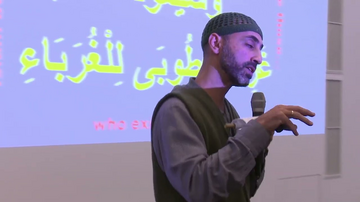Am 13. Oktober 2022 fand im Albertinum der Staatlichen Kunstsammlungen Dresden die Konferenz „Revolutionary Romances: Into the Cold – Alternative Artistic Trajectories into (Post-)Communist Europe“ statt. Von Kathleen Reinhardt (Kuratorin für zeitgenössische Kunst, Albertinum) und Julia Tatiana Bailey (ehemalige Kuratorin für moderne und zeitgenössische Kunst, Nationalgalerie Prag) organisiert, vereinte die Konferenz Wissenschaftler*innen im frühen und mittleren Stadium ihrer Laufbahn, um revisionistische Darstellungen des künstlerischen Austauschs im Kalten Krieg vorzustellen und zu diskutieren. Im Kern ging es bei der Konferenz darum, das Narrativ des „Überlaufens“ von Ost nach West zu durchbrechen und ein weitaus komplexeres Verständnis des kulturellen Kontakts, Austauschs und der Interaktion während des Kalten Krieges zu vermitteln. Obwohl ein zweites Ziel des Projekts darin bestand zu erforschen, wie und warum Künstler*innen aus dem „Westen“ in den „Osten“ gingen, zeigten die Präsentationen und Diskussionen eine weitaus größere Bandbreite an Berührungspunkten, Verbindungen und Brüchen.
Diese Konferenz wurde im Zusammenhang mit dem Forschungs- und Ausstellungsprojekt Revolutionary Romances: Transkulturelle Kunstgeschichten in der DDR im Albertinum vorgestellt. Im Mittelpunkt dieses breitgefächerten Projekts stehen die kulturellen Beziehungen zwischen der Deutschen Demokratischen Republik, den sozialistisch orientierten Ländern des Globalen Südens und den Unabhängigkeitsbewegungen in Asien, Afrika und Lateinamerika von 1949 bis 1990, aus denen bereits die Konferenz Die globale DDR – Eine transkulturelle Kunstgeschichte (1949–1990) hervorgegangen ist. Die Konferenz „Revolutionary Romances: Into the Cold“ wurde durch die Unterstützung der Terra Foundation for American Art ermöglicht und baute auf dem Anthologieprojekt Art in Translation/University of Edinburgh Hot Art, Cold War auf.
Im Einklang mit dem Ziel, verschiedene neue Narrative für die Kultur während des Kalten Krieges zu entwickeln, war der Tag um drei thematische Sessions herum organisiert. Border Crossings konzentrierte sich auf innovative Kanäle für die grenzüberschreitende Zirkulation von Kunst über die Teilungen des Kalten Krieges hinweg, die Europa, Nordafrika und Lateinamerika umspannen. Middle Grounds befasste sich mit den Räumen, die Plattformen für die künstlerische Zusammenarbeit auf der Grundlage gemeinsamer Werte zwischen Künstler*innen auf beiden Seiten des Eisernen Vorhangs boten. Other Meeting Points beleuchtete, wie rassifizierte Kunstschaffende in den Vereinigten Staaten das Potenzial sozialistischer künstlerischer Praktiken in Osteuropa erforschten, um ihr Streben nach Rechten und Anerkennung in ihrer Heimat zu unterstützen. Auf jede Sitzung folgte eine Frage- und Antwortrunde, zu der sowohl die Teilnehmenden vor Ort als auch online eingeladen waren. Um einen engen Dialog zwischen Kunsthistoriker*innen und Kunstschaffenden zu gewährleisten, wurden auch diese Themen durch Beiträge von international renommierten Künstler*innen präsentiert: Jasmina Cibic, Yevgeniy Fiks, und Slavs and Tatars.
Die erste Sitzung des Tages, die von Kathleen Reinhardt anmoderiert wurde, umfasste vier Präsentationen, in denen innovative Strategien der künstlerischen Produktion und der transnationalen Zirkulation zwischen dem kommunistischen Europa und der nichtkommunistischen Welt untersucht wurden. Die Referent*innen zeigten, wie wichtige Künstler*innen in den 1950er bis 1970er Jahren soziale und ästhetische Zwänge herausforderten, um grenzüberschreitende Verbindungen und gemeinschaftliche Praktiken zu schaffen, die die Solidarität über die Grenzen des Kalten Krieges hinweg förderten.
Gaelle Prodhon (Universität Paris, Nanterre-Institut national d’histoire de l’art, Paris) begann mit einer Untersuchung der fotografischen Strategien als Reaktion auf die algerische Revolution und deren Folgen – in einer Zeit, in der das gerade unabhängig gewordene Land seine politische Autonomie durch die Übernahme sozialistischer Modelle behauptete. Anhand des Dreiecks zwischen Algerien, Frankreich und der DDR in den 1950er und 1960er Jahren lenkte Prodhon die Aufmerksamkeit auf die Produktion, Zirkulation und Manipulation fotografischer Bilder auf allen Seiten, um aufzuzeigen, wie die Fotografie als kollektive Praxis zu einem politischen Instrument im Dienste der Revolution und der postrevolutionären Ambitionen wurde. Sie betonte insbesondere die Durchlässigkeit der Grenzen zwischen offizieller, individueller und dissidenter Fotografie, da die Fotograf*innen in komplexen Räumen der Sichtbarkeit agierten.
Christopher Williams-Wynn (Harvard University) skizzierte dann, was er als „eine kleine Form der Solidarität“ bezeichnete, die durch das internationale Mail-Art-Netzwerk der 1970er Jahre entwickelt und aufrechterhalten wurde. Durch die Thematisierung der physischen und thematischen Überschneidungspunkte zwischen den Werken von Ruth Wolf-Rehfeldt und Horacio Zabala widersetzt sich Williams-Wynn dem kunsthistorischen Drang zur Lokalisierung von Erzählungen durch die Erforschung von Begegnungen zwischen Osteuropa und Südamerika. Unter Hinweis auf das in den Arbeiten beider immer wiederkehrende Motiv des Käfigs legte Williams-Wynn dar, inwiefern er die Mail Art als Mittel, um aus den bestehenden geopolitischen und ästhetischen Strukturen der Produktion und Zirkulation auszubrechen, wahrnimmt. Diese Präsentation innovativer Formen der Konnektivität aus der Ferne rückte auch vertraute Methoden der Kontextualisierung in ein neues Licht und forderte uns heraus, unsere eigenen Aufmerksamkeitsmuster zu überprüfen.
Jérôme Bazin (Université Paris-Est Créteil) präsentierte erste Archivfunde aus Polen und Bulgarien und stellte ein neues Forschungsprojekt anhand eines „Doppelporträts“ von zwei Künstler*innen vor, deren Arbeiten beispielhaft für die Ambivalenzen des transnationalen Austauschs stehen. Am Beispiel der mexikanischen Malerin Olga Costa, deren russisch-deutsche Herkunft während ihrer Teilnahme an einer Ausstellung mexikanischer Kunst in Europa Mitte der 1950er Jahre übersehen wurde, und der mexikanisch inspirierten Wandgemälde des bulgarischen Künstlers Yoan Leviev, die Ende der 1960er Jahre in Plovdiv entstanden, deckte Bazin destabilisierende Instanzen von Anwesenheit und Abwesenheit, Nähe und Distanz auf, um Themen wie unvollständige Imitationen, diskontinuierliche Neuerfindungen und Diskrepanzen in der Stilisierung je nach historischem und gegenwärtigem Ort zu untersuchen.
Mary Ikoniadou (Leeds School of Arts) schloss die Session mit einer Betrachtung der antifaschistischen grafischen Zeichnungen von Nikos Manoussis für die illustrierte Zeitschrift Pyrsos/Πυρσός (Die Fackel) aus den 1960er Jahren, die in der DDR unter der redaktionellen Kontrolle der im Exil befindlichen Kommunistischen Partei Griechenlands produziert wurde. Ikoniadou erörterte, wie sich Manoussis' transnationale Position als Flüchtling aus dem griechischen Bürgerkrieg, der an der Hochschule für Bildende Künste in Dresden ausgebildet wurde, in einer künstlerischen Praxis widerspiegelt, die Bezüge zu griechischen Traditionen, zum deutschen Expressionismus, zu den Prozessen der Weimarer Zeit, zu Ausdrucksformen des Sozialistischen Realismus und zu Prinzipien der internationalen Moderne aufweist. Ikoniadou zeigte, wie Manoussis seine „Brecht‘sche“ Ästhetik mit diesem Engagement für die Solidarität der Linken und die damalige ästhetische Politik der DDR in Einklang brachte, was wichtige Fragen der Unabhängigkeit und Kontrolle aufwarf. Ikoniadou argumentierte, dass im Gegensatz zur bildenden Kunst die Arbeit des Künstlers im Bereich der Druckgrafik und des Verlagswesens – eine Arbeit, die als eher der Arbeiterklasse zugehörig angesehen wird – sein Oszillieren über ästhetische und kulturpolitische Grenzen hinweg ermöglicht.
Die in London lebende slowenische Performance-, Installations- und Filmkünstlerin Jasmina Cibic präsentierte Beispiele ihrer Arbeit, die sie auf der Grundlage ihrer umfangreichen Archivrecherchen zur sozialistischen Geschichte der Moderne entwickelt hat. Anhand von Dokumenten und Fotografien aus Quellen, die von den Vereinten Nationen in Genf bis hin zu staatlichen Sammlungen reichen, untersuchte sie die unzähligen Dimensionen des ehemaligen Jugoslawiens. Mit Überlegungen zu ihrer persönlichen künstlerischen Praxis warf Cibic Fragen zur Rolle der Moderne als politischem Instrument auf, sowohl im historischen Ostblock als auch in dessen aktuellen Wiederentdeckungen und Neuinterpretationen. Im Anschluss an Cibics Vortrag wurde ihr Film Tear Down and Rebuild aus dem Jahr 2015 vorgeführt, in dem sie Worte historischer Persönlichkeiten miteinander verwebt, um das Paradox der nationalen und ideologischen Repräsentation durch architektonische Formen aufzudecken.
In der ersten Sitzung des Nachmittags, die von Julia Tatiana Bailey eröffnet und geleitet wurde, kamen drei Wissenschaftlerinnen und Kuratorinnen zusammen, um sich mit den Institutionen und Organisationen zu beschäftigen, die Plattformen für kreative Zusammenarbeit auf der Grundlage gemeinsamer Werte zwischen Künstler*innen auf beiden Seiten des Eisernen Vorhangs boten.
Sophie Thorak (Brandenburgische Technische Universität Cottbus-Senftenberg) zeigte am Beispiel der Intergrafik 65, einer Ausstellung zu Grafik in Ostberlin, wie lebendig die internationale Debatte in der ostdeutschen Kunstwelt war. Die Ausstellung, so Thorak, fand in einer Zeit statt, in der sich die DDR um mehr internationale Anerkennung und Legitimität bemühte, vor allem, indem sie eine anti-imperialistische und anti-militaristische Haltung vertrat. Bei der Durchsicht der in den Staatsarchiven aufbewahrten Transkripte zeigte Thorak die Bandbreite der kritischen Perspektiven auf die Ziele und Mittel der künstlerischen Produktion mit vermeintlich sozialistischen Merkmalen auf. Am wichtigsten ist vielleicht, dass ihr Beitrag das Ausmaß zeigte, in dem singuläre Narrative von Kunst und Politik keine Gültigkeit haben, selbst in Bezug auf Einzelpersonen. Auch die Aufmerksamkeit gegenüber den Mehrdeutigkeiten der Sprache war aufschlussreich. Künstler*innen und Kritiker*innen forderten „Kunst die verändert“, eine Erklärung, die sich auf gefährliche Weise sowohl auf die Kunst selbst als auch auf das gesellschaftliche System im Allgemeinen beziehen könnte.
Agnieszka Pindera (Muzeum Sztuki, Łódź) lenkte unsere Aufmerksamkeit auf eine Reihe von Begegnungen, die in den 1980er Jahren zwischen Künstler*innen aus Polen und den Vereinigten Staaten stattgefunden haben. Als Teil einer umfassenderen Revision der Schilderungen über die Teilung im Kalten Krieg zeigte sie die entscheidende Vermittlerrolle der Institutionen auf. Pindera kehrte zu den unwahrscheinlichen Begegnungen zwischen dem Künstler Sam Francis und den Kurator*innen und Museumsdirektor*innen Pontus Hultén und Suzanne Pagé zurück und erzählte, wie sie dazu beitrugen, polnische und amerikanische Künstler im Musée d'Art Moderne de Paris zusammenzubringen. Sie vermied geschickt eine vereinfachende Geschichte von reibungslosem Austausch, indem sie sich auch mit dem Wiederaufleben früherer Momente der Moderne befasste, wie etwa mit Władysław Strzemińskis Neoplastic Room, der 1948 entworfen, später zerstört und schließlich 1960 im Muzeum Sztuki in Łódź wieder aufgestellt wurde. Zusammengenommen ergeben diese Episoden eine Geschichte der internationalen Moderne, die von Verzögerungen und Unterbrechungen, Wiederaufschwüngen und Neuerfindungen geprägt war.
Im letzten Vortrag dieser Session reflektierte Maria Anna Rogucka (Jagiellonen-Universität – Humboldt-Universität) darüber, wie die politischen Veränderungen in Polen in den 1970er Jahren unsere Erwartungen an den Ost-West-Kulturaustausch in Frage stellen. Am Beispiel der Ausstellung des US-amerikanischen Künstlers polnischer Abstammung Steve Poleskie in der Studio Gallery in Warschau im Jahr 1979 – die Teil einer weiterreichenden Initiative zur Förderung des Austauschs zwischen polnisch-amerikanischen und polnischen Künstlern war – stellte Rogucka einen Zusammenhang zwischen Poleskies unverwechselbarer Sky Art – einer Mischung aus Zeichnung, Siebdruck, Collage und dreidimensionaler Luft-Performance – und seiner Überschreitung kultureller und geopolitischer Grenzen her.
Zum Abschluss der zweiten Sitzung trat der in Moskau geborene und in New York lebende Konzeptkünstler Yevgeniy Fiks im Gespräch mit der Kunsthistorikerin und Kuratorin Ksenia Nouril (The Art Students League of New York) auf. Fiks sprach im Nachdenken über seine Position als Künstler im Ausland mit Nouril über die Art und Weise, wie er selbst Archivmaterial nutzt, um unser Verständnis der kommunistischen Geschichte und ihrer unerwarteten Hinterlassenschaften in den Vereinigten Staaten zu hinterfragen.
In der letzten Sitzung des Tages, die von Jérôme Bazin eingeleitet wurde, standen zwei längere Präsentationen im Mittelpunkt, die sich mit der Frage beschäftigten, wie Künstler*innen, die in den Vereinigten Staaten als „anders“ abgestempelt wurden, im Ostblock nach Möglichkeiten suchten, um alternative Formen der Solidarität und Verbindung zu schaffen.
Jessica Horton (University of Delaware) lieferte einen dringend benötigten Beitrag, um die binäre Logik der Staatskunst des Kalten Krieges zu erschüttern, indem sie das Konzept der earth diplomacy vorstellte, einer Art von Interessenvertretung, die von indigenen Kosmologien abgeleitet ist und auf diesen beharrt. Horton schildert, wie der Einsatz indianischer Kunst für US-Propagandaausstellungen im Ausland abwechselnd zur Unterdrückung und Unterstützung von Kampagnen für die Rechte der Ureinwohner*innen im eigenen Land genutzt wurde. So erörtert sie den Beitrag des Luiseño-Künstlers Fritz Scholder zu einer USIA-Ausstellung in Bukarest im Jahr 1972, bei der seine inoffizielle Reise nach Transsylvanien zu einer rätselhaften Reihe von Gemälden führte, in denen die amerikanischen Ureinwohner*innen mit Vampiren gleichgesetzt wurden. Indem sie den Kalten Krieg als Erbe und Fortsetzung des europäischen Kolonialismus darstellte – wobei alle Seiten versuchten, sich auf Kosten der menschlichen und ökologischen Gesundheit zu modernisieren –, unterstrich Hortons kosmopolitische Perspektive die wahrhaft planetarische Reichweite der Diplomatie des Kalten Krieges.
Die Organisatorinnen der Konferenz, Kathleen Reinhardt und Julia Tatiana Bailey, beleuchteten zum Abschluss des Tages die Verflechtungen von Kunst, Politik und Rasse anhand von Beispielen schwarzer US-amerikanischer Kunstschaffender, die sich für das kommunistische Europa entschieden. In diesem gemeinsamen Vortrag, der Künstler*innen wie Oliver Wendell Harrington, Charles White und Margaret Burroughs miteinander verband, wurde argumentiert, dass die staatlich geförderte sozialistische Kunstpraxis in der DDR und der Sowjetunion verschiedene Anziehungspunkte bot – von Beschäftigungs- und Ausstellungsmöglichkeiten, die in den Vereinigten Staaten aufgrund politischer oder rassistischer Diskriminierung ihnen verwehrt wurden, bis hin zu Beispielen für eine auf das Volk ausgerichtete Bildsprache zur Unterstützung der aufkeimenden afroamerikanischen Bürgerrechtsbewegung. Reinhardt und Bailey eröffneten weiterführende Forschungswege, indem sie darauf hinwiesen, auf welche Weise die Erfahrungen und das gesammelte Wissen dieser Künstler*innen jenseits des Eisernen Vorhangs in die Visualisierung der Black Power eingeflossen sein könnten, die in prominenten künstlerischen Praktiken der zeitgenössischen Kunstwelt weiterhin nachhallt.
Den Abschluss der Konferenz bildete die Lecture-Performance Red-Black Thread des Künstlerkollektivs Slavs and Tatars, die von Hilke Wagner, Direktorin des Albertinums, eingeführt wurde. Die Performance brachte den Spirit der Konferenz auf den Punkt, indem sie die russischsprachige Perspektive, insbesondere die der Sowjetunion und des zaristischen Russlands, über die vorherrschenden westlichen Interpretationen stellte, um die internationale Entwicklung von Konzepten in Verbindung mit der Black Identity zu dokumentieren. Durch die Untersuchung der miteinander verwobenen Geschichten und Erfahrungen von Arbeit, Rasse und Sexualität holt das Werk die gescheiterten Versprechen von Koexistenz zurück und lässt so die Möglichkeit eines neuen Verständnisses offen. Slavs and Tatars waren 2018 bereits im Zuge einer Einzelausstellung im Lipsiusbau und im Albertinum an den SKD zu sehen - ebenfalls begleitet von Lecture Performances, die hier und hier gesehen werden können.
Vor allem aber verdeutlichte „Revolutionary Romances: Into the Cold“ das Ausmaß der komplexen Beziehungen und Verhandlungen, die während des Kalten Krieges auf verschiedenen Ebenen stattfanden – von einzelnen Drucken und Fotografien über Künstler*innen und Kurator*innen bis hin zu Institutionen. Um diese kulturellen Entwicklungen besser zu verstehen, wird sich die Kunstgeschichte mit mehreren Analyseebenen auseinandersetzen müssen, wenn sie weiterhin überkommene, ideologische Narrative problematisieren will, die letztlich eine viel zu einfache Vorstellung von der Geschichte vermitteln. Mehr oder weniger explizit, je nach Vortrag, wurden auf der Konferenz die Gültigkeit und der Wert nationaler oder staatlicher Bezugssysteme für die Kunstgeschichte in Frage gestellt. Am Ende des Tages war bei weitem nicht klar, ob solche geopolitischen Grenzen noch irgendeine nützliche Erklärungskraft haben (wenn sie überhaupt jemals eine hatten) oder ob sie nichts weiter als analytische Grenzen sind, auf die man sich eher aus Gewohnheits- als aus gerechtfertigten Gründen verlässt. In ihrer Gesamtheit verdeutlichten die Beiträge den anhaltenden Bedarf an feiner abgestimmten Analysen der kulturellen Produktion im Kalten Krieg, um die vielfältigen Formen der Begegnung zu berücksichtigen, die die transkulturellen Interaktionen zwischen Kunstschaffenden, Kritik und Kurator*innen kennzeichnen.


Auch interessant:
Die Vernichtung von Vinh City durch die US-Bombenangriffe bot die Gelegenheit zur experimentellen Planung und Umwandlung der kleinen Industriestadt in eine sozialistische Modellstadt. Die ehrgeizige Aufgabe der DDR, der allumfassende Wiederaufbau, bestand in der gemeinsamen Arbeit an der Erstellung eines Masterplans und dessen Umsetzung in die Realität. Christina Schwenkel über den Quang Trung Wohnkomplex.
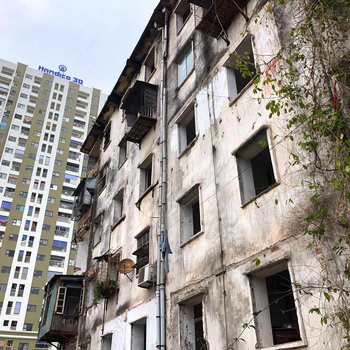
In den Jahren 2022 und 2023 richten die Staatlichen Kunstsammlungen Dresden mit dem Forschungs- und Ausstellungsprojekt „Kontrapunkte“, gefördert von der Kulturstiftung des Bundes, den Blick erneut auf die Zeit der DDR. Ausgehend von den eigenen Beständen und der eigenen Sammlungsgeschichte werden neue Perspektiven auf die Kunst in der DDR, ihre Wahrnehmung und Bedeutung in Vergangenheit und Gegenwart entwickelt und um internationale Perspektiven erweitert. Dazu sind verschiedene analoge sowie digitale Formate vorgesehen, über die wir auf dieser Plattform informieren.
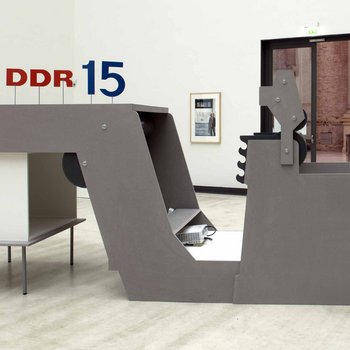
Immer wieder dasselbe Motiv - Jane Boddy über zwei Arbeiten von Eberhard Havekost, die zur Zeit in der Ausstellung "Zeitgefühle" im Kupferstich-Kabinett zu sehen sind, und über die (Un)Möglichkeit der Wiederholung.
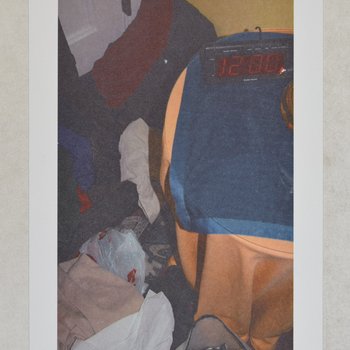
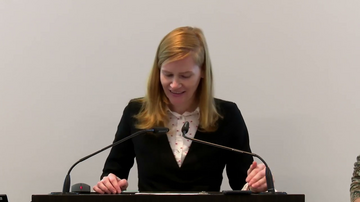
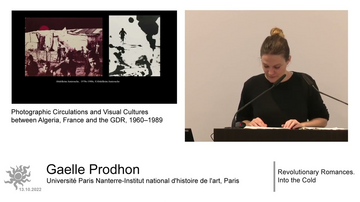
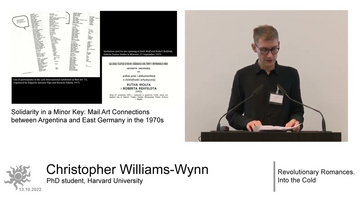
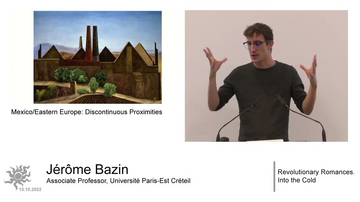
![Between Antifascist and Modernist Aesthetics in the Work of an Émigré [...] (Mary Ikoniadou) Between Antifascist and Modernist Aesthetics in the Work of an Émigré [...] (Mary Ikoniadou)](/fileadmin/_processed_/4/e/csm_Between_Antifascist_and_Modernist_Aesthetics_in_the_Work_of_an_Emigre__...___Mary_Ikoniadou__5365e271dc.png)
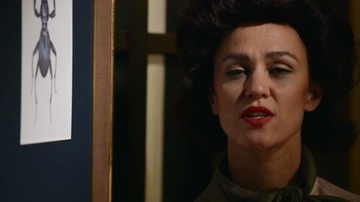
![Attitude and Doctrine: The Intergrafik as a Place for Demonstrations of [...] (Sophie Thorak) Attitude and Doctrine: The Intergrafik as a Place for Demonstrations of [...] (Sophie Thorak)](/fileadmin/_processed_/f/6/csm_Attitude_and_Doctrine__The_Intergrafik_as_a_Place_for_Demonstrations_of__...___Sophie_Thorak__093b8d01b7.png)
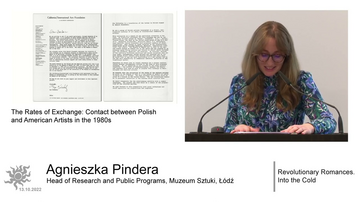
![Collaging Outlaw Exhibition: Steve Poleskie’s Aerobatic Sky Art in Warsaw [...] (Maria Anna Rogucka) Collaging Outlaw Exhibition: Steve Poleskie’s Aerobatic Sky Art in Warsaw [...] (Maria Anna Rogucka)](/fileadmin/_processed_/5/3/csm_Collaging_Outlaw_Exhibition__Steve_Poleskie_s_Aerobatic_Sky_Art_in_Warsaw__...___Maria_Anna_Rogucka__26fab727d8.png)
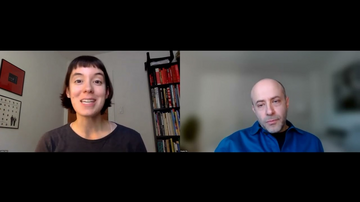
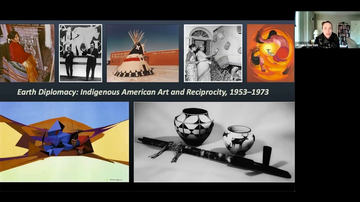
![Charles White, Civil Rights, and Black US Art in [...] (Kathleen Reinhardt/Julia Tatiana Bailey) Charles White, Civil Rights, and Black US Art in [...] (Kathleen Reinhardt/Julia Tatiana Bailey)](/fileadmin/_processed_/9/4/csm_Charles_White__Civil_Rights__and_Black_US_Art_in__...___Kathleen_Reinhardt_Julia_Tatiana_Bailey__d5885fe593.png)
